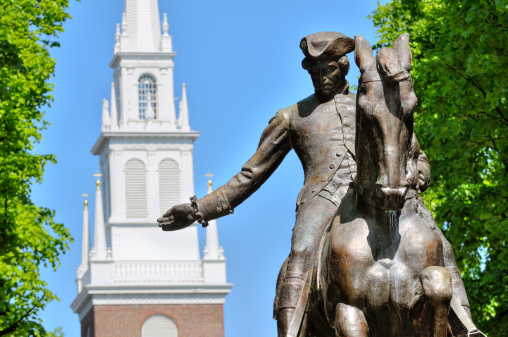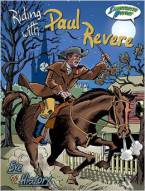Socratic Circles and the Common Core: A Close Reading of the Text (Part II)
 In Part I of our series on Socratic circles and English language learners (ELLs), we provided you with an explanation of what Socratic circles are, how they're relevant in the Common Core, and some general suggestions for scaffolding Socratic circles for ELLs. This week, in Part II & Part III of our series, we'd like to provide you with a concrete example of how to scaffold Socratic circles for ELLs based on a specific text and walk you through the activity step by step.
In Part I of our series on Socratic circles and English language learners (ELLs), we provided you with an explanation of what Socratic circles are, how they're relevant in the Common Core, and some general suggestions for scaffolding Socratic circles for ELLs. This week, in Part II & Part III of our series, we'd like to provide you with a concrete example of how to scaffold Socratic circles for ELLs based on a specific text and walk you through the activity step by step.
We have chosen to base our example on Henry Wadsworth Longfellow's poem Paul Revere's Ride, which is a CCSS exemplar text for the 6th-8th grade. In order for the Socratic Circle activity to succeed, particularly with a complex text such as this one, teachers would need to adequately prepare students through a close reading of the text beforehand as well as with the use of scaffolding activities over the course of a few days. Also, we recommend that the first time you try out a Socratic circle in your classroom, you do so with an easier text so that your students get a good sense of the activity.
Note: This activity was prepared by co-author Sydney Snyder.
A Close Reading of the Text
Before being able to participate in a Socratic circle, all students will need to be very familiar with the text and vocabulary that will be used when discussing the text. They will also need some concise background knowledge, described below.
The following strategies (background instruction, academic vocabulary instruction, close reading, graphic organizer, and small group work) will help prepare ELLs for participating in a Socratic circle based on the Longfellow text.
Background instruction on Paul Revere and Longfellow
Students will need background information on the following:
- Who was Paul Revere?
Students will benefit from background on Paul Revere and the Revolutionary War that helps put Paul Revere's story in context. - Who was Henry Wadsworth Longfellow?
Students should know that Longfellow often wrote lyric poetry about mythology a nd legends, and they should also understand what was happening historically when Longfellow wrote the poem.
Consider writing short (around one paragraph) background knowledge pieces for your students with guiding and supplementary questions. You could also provide additional supplementary information, including:
- Illustrated books such as Who Was Paul Revere? By Roberta Edwards
- An animated video about Paul Revere's ride (one example is Liberty's Kid's Midnight Ride)
Explicit academic vocabulary instruction
We would suggest the pre-teaching the following words: lantern, alarm, arm, row, stealthy, impetuous, steed, emerge, defiance, and redcoats that are key to understanding the text. You could also consider doing a mini-lesson on secondary meanings of words such as "arm" and "ball." As there are many unfamiliar words, it will be helpful for students to have a teacher-created glossary to use during the close reading. (See this sample glossary from Colorín Colorado's Common Core project in Poughkeepsie, NY.) The teacher can also teach context specific vocabulary, such as Somerset, Middlesex, and Medford, during the close read.
Close reading of the text
 As a class or in small groups, have students read the text. The text should be broken into comprehensible chunks, and each chunk should be scaffolded with text-dependent questions. Sentence frames, sentence stems, and word banks should be provided for those students who need them. Additional materials to support the close reading of the text might include:
As a class or in small groups, have students read the text. The text should be broken into comprehensible chunks, and each chunk should be scaffolded with text-dependent questions. Sentence frames, sentence stems, and word banks should be provided for those students who need them. Additional materials to support the close reading of the text might include:
- A graphic novel of the poem,
- An illustrated version of the poem,
- An audio version of the poem,
- A translated version of the text (for ELLs who are literate in their home language).
Graphic organizer
Depending on what aspect of the poem you'd like to focus on, you could develop graphic organizers to support different types of analysis. For example, you might use a Venn diagram to compare the events of the poem with the historical reality. You could also develop a graphic organizer to have students pull out different aspects of the poem such as text features (e.g. stanza, meter, rhyme, verse, imagery) and writer's purpose along with supporting examples from the text. The table below highlights the way in which different standards can be met through the use of different graphic organizers.
| Standard | Standard Type | Type of Graphic Organizer to Use |
|---|---|---|
| CCSS.ELA-LITERACY.RL.8.2Determine a theme or central idea of a text and analyze its development over the course of the text, including its relationship to the characters, setting, and plot; provide an objective summary of the text. | Key Ideas and Details | A sequential organizer that requires students to describe the chronological events of the poem in their own words and how the theme or central idea is developed |
| CCSS.ELA-LITERACY.RL.8.4Determine the meaning of words and phrases as they are used in a text, including figurative and connotative meanings; analyze the impact of specific word choices on meaning and tone, including analogies or allusions to other texts. | Craft and Structure | An idea web that places the title of the poem in the middle and asks for students to identify examples from the text of language that demonstrates figurative language, mood/imagery, sound devices, and theme |
| CCSS.ELA-LITERACY.RL.8.7Analyze the extent to which a filmed or live production of a story or drama stays faithful to or departs from the text or script, evaluating the choices made by the director or actors.(Note: This standard is not an exact match for the task students will be doing, but they will gain practice comparing two characterizations of events.) | Integration of Knowledge and Ideas | A Venn diagram or T-chart that has students compare the poem with the historical event |
The graphic organizer below is an example of the type of idea web that could be used to help students identify central text features. Students should be asked to use their text to identify words and phrases that exemplify each text feature and then make connections between the use of these text features and the theme.
| Figurative language (similes, metaphors, imagery): Each mast and spar across the moon like a prison bar | ||
| Sound devices (rhyme, repetition): Hear, Revere | Title: Paul Revere's Ride Author: Henry Wadsworth Longfellow | Mood and tone: Beneath, in the churchyard, lay the dead |
| Theme: Fate of the nation | ||
Directions
Identify words and phrases from Paul Revere's Ride that are examples of each text feature (figurative language, sound device, mood and imagery). Then, identify language that shows the theme of the poem. Think about why Longfellow chose to use certain language and sound devices to support the theme of the poem.
Small group work
Students will need practice in posing and responding to higher order questions about the text and using evidence to support their claims. To help support ELLs, you can place students in groups of 2 or 3 and have them use their graphic organizer to develop questions based on the text. Then have them practice asking and responding to the questions they have written. Questions based on the text might include:
- What is the mood of the text?
- What language in the text contributes to the mood of the text?
- What examples of imagery do you find in the text?
- How does the imagery contribute to the main idea of the text?
To scaffold this activity for lower level ELs, provide sentence stems. Examples include:
- The _____________ of the text is ______________________.
- An example from the text that demonstrates the mood is _________________________.
- _______________________ is an example of imagery.
Note: A step-by-step description of the Socratic circle activity is included in Part III of this series, Socratic Circles and the Common Core: Activity Ideas for ELLs.








Add new comment